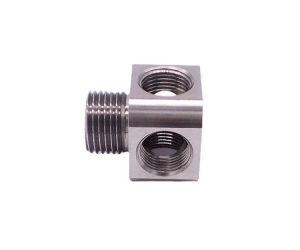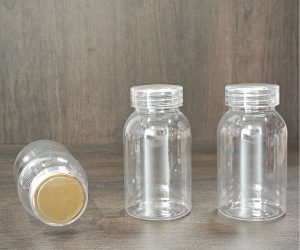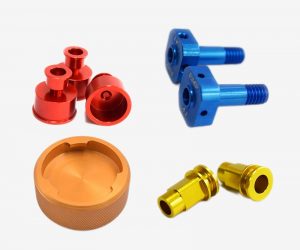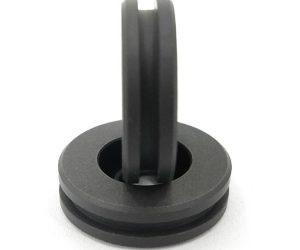The exigencies of high-volume injection molding demand a rigorous approach to screw maintenance. Failure to meticulously clean injection molding screws precipitates not only compromised product quality and production halts, but also accelerated component degradation, resulting in costly unscheduled downtime and potential catastrophic failure. This is not merely a matter of routine upkeep; it's a critical process demanding precision and adherence to best practices.
Purging Compound Protocols: The initial phase necessitates the strategic deployment of a high-performance purging compound, carefully selected based on the specific resin history of the machine. Generic solutions are inadequate; the compound must possess the chemical affinity to effectively dislodge and encapsulate stubborn residues, including, but not limited to, thermally degraded polymers, pigment agglomerates, and volatile additive remnants. Blind adherence to manufacturer guidelines is insufficient; optimization of purging parameters—temperature profiles, screw speed modulation, and dwell times—is crucial for maximizing efficacy.
Beyond the Purging Compound: The simplistic notion of a single purging cycle achieving complete remediation is naive. A multi-stage approach, incorporating graduated purging compound viscosities and strategically timed pressure pulses, may be required to address complex contamination scenarios. Furthermore, the selection of the purging compound itself must consider the residual material matrix; a mismatched compound can exacerbate the problem, leading to irreversible polymer degradation or the formation of intractable composite residues.
Advanced Cleaning Techniques: Manual intervention, while seemingly straightforward, demands a nuanced understanding of screw geometry and material properties. Improper scrubbing techniques can introduce micro-scratches, compromising the screw's integrity and accelerating wear. Specialized cleaning tools, potentially employing ultrasonic cavitation or cryogenic techniques, may be necessary for recalcitrant residues.
Screw Disassembly and Inspection: Routine screw extraction for thorough inspection and cleaning is not optional; it's mandatory for maintaining optimal performance. This allows for the identification of subtle wear patterns, potential stress fractures, and the complete removal of embedded contaminants inaccessible through in-situ cleaning methods. This process necessitates a comprehensive understanding of the machine's mechanical architecture and adherence to stringent safety protocols.
Temperature Control and its Ramifications: Temperature management transcends simple adherence to manufacturer recommendations. It demands an understanding of the thermal behavior of both the purging compound and the residual materials, requiring precise control and, potentially, the implementation of sophisticated thermal profiling techniques to optimize the cleaning process.
Predictive Maintenance and Contamination Mitigation: Proactive measures are paramount. This includes rigorous material handling procedures, meticulous hopper sanitation, and the implementation of a robust changeover protocol to minimize cross-contamination. Data-driven predictive maintenance strategies, leveraging sensor data and machine learning algorithms, can provide early warnings of impending contamination issues, allowing for timely intervention.
Safety is Non-Negotiable: Lockout/Tagout procedures are not suggestions; they are mandatory. The use of appropriate personal protective equipment (PPE), including respiratory protection, is non-negotiable. Deviation from established safety protocols is unacceptable and will result in severe consequences.
Comprehensive Barrel Assessment: The barrel itself is an integral part of the system and requires equally rigorous cleaning. This may involve specialized barrel cleaning tools, chemical treatments, or, in extreme cases, barrel replacement.
Post-Cleaning Verification: Post-cleaning verification should extend beyond a simple visual inspection. Rigorous testing, including particle analysis of the initial molded parts, is crucial to ensure complete contaminant removal.
In conclusion, the cleaning of injection molding screws is not a trivial task; it's a complex, multi-faceted process demanding precision, expertise, and an unwavering commitment to safety. Ignoring these principles will inevitably lead to compromised product quality, costly downtime, and potentially catastrophic equipment failure.
Introduction
The seemingly prosaic act of injection molding—a cornerstone of mass production—conceals a complex interplay of material science, thermodynamics, and mechanical engineering, fraught with insidious challenges that can unravel even the most meticulously planned operation. While the process yields high-quality parts of intricate design, the inherent vulnerabilities of the system, including material degradation, insidious contamination, unpredictable color shifts, and the insidious erosion of the injection screw, frequently undermine efficiency and profitability. These are not mere inconveniences; they represent systemic weaknesses capable of triggering cascading failures.
The injection screw, a seemingly robust component, is the heart of the process, subjected to the relentless assault of extreme temperatures, pressures that dwarf atmospheric conditions, and shear forces that induce molecular transformations. This brutal environment fosters the accretion of plastic residues, forming tenacious deposits that choke the screw's channels, creating stagnant zones where degradation accelerates exponentially. These aren't merely cosmetic blemishes; they are the harbingers of catastrophic failure. The consequences manifest as compromised melt homogeneity, elevated back pressure and torque—potentially exceeding the machine's operational limits—and the aesthetically unacceptable, yet diagnostically crucial, appearance of color streaks and black specks in the finished product, signaling compromised material integrity. Furthermore, these deposits act as abrasive agents, accelerating wear and corrosion, precipitating premature screw failure and escalating maintenance costs into a crippling burden.
Therefore, the seemingly mundane task of screw cleaning transcends mere maintenance; it becomes a critical intervention, a prophylactic measure against systemic collapse. Regular and thorough cleaning is not optional; it's a non-negotiable imperative for maintaining production integrity. The benefits extend beyond the obvious: improved product quality, minimized material waste and costly downtime, extended screw lifespan and enhanced performance, and significant energy savings. However, the process itself is far from trivial; it demands a nuanced understanding of cleaning methodologies, the judicious selection of tools and materials, and the rigorous adherence to best practices. A cavalier approach risks exacerbating existing problems, potentially leading to irreversible damage. This necessitates a comprehensive, multi-faceted strategy, tailored to the specific characteristics of the material being processed and the operational parameters of the injection molding machine. The following sections will delve into the intricacies of effective screw cleaning, providing a detailed roadmap to navigate the complexities and avoid the pitfalls that await the unprepared.
Why Clean Injection Molding Screws?
As we mentioned earlier, cleaning injection molding screws is important for several reasons:
- It improves the quality of the final products by preventing color streaks, black specks, burn marks, dimensional variations, and other defects caused by material degradation and contamination.
- It reduces material waste and downtime by minimizing purging time and frequency during product changeovers and avoiding screw jams and breaks.
- It extends screw life and performance by reducing wear and corrosion caused by abrasive and corrosive materials and deposits.
- It saves energy and costs by lowering back pressure and torque, improving melt quality and consistency, reducing cycle time and scrap rate, and decreasing maintenance expenses.
Best Practices for Cleaning Screws
To achieve effective and efficient cleaning of injection molding screws, you should follow some best practices:
- Plan ahead: Before starting any cleaning procedure, you should plan ahead by checking the production schedule, preparing the necessary tools and materials, choosing the most suitable cleaning method for your application, setting up a safe working area, wearing protective equipment, etc.
- Follow instructions: You should always follow the manufacturer's instructions for using any cleaning product or tool. You should also follow the standard operating procedures (SOPs) for your injection molding machine and screw design.
- Use compatible materials: You should always use cleaning products or tools that are compatible with your screw material and coating. You should also avoid mixing different types of materials or chemicals during cleaning.
- Monitor temperature: You should always monitor the temperature of your screw during cleaning. You should avoid overheating or underheating your screw as this can cause damage or ineffective cleaning.
- Clean thoroughly: You should always clean your screw thoroughly by removing all the plastic residues and contaminants from its surface and channels. You should also inspect your screw after cleaning to ensure that it is free of any deposits or defects.
- Store properly: You should always store your screw properly after cleaning. You should protect your screw from dust, moisture, and corrosion by applying a thin layer of oil or grease, wrapping it in a plastic bag, and placing it in a dry and ventilated area.
Common Mistakes to Avoid When Cleaning Screws
To avoid damaging or ineffective cleaning of injection molding screws, you should avoid some common mistakes:
- Do not use an acetylene torch: One of the biggest mistakes that can be made when cleaning screws is to use an acetylene torch. This can destroy the metallurgical properties and tolerances of the screw, cause bending, cracking, or delamination of the metal, and reduce the wear resistance and strength of the screw.
- Do not use abrasive or corrosive materials: Another common mistake is to use abrasive or corrosive materials, such as sandpaper, steel wool, wire brushes, acids, or alkalis. These can scratch, pit, or erode the surface and coating of the screw, increasing the risk of wear and corrosion.
- Do not use excessive force or pressure: Another mistake is to use excessive force or pressure when cleaning screws, such as hammering, prying, or scraping. These can deform, dent, or break the screw, affecting its geometry and functionality.
- Do not leave the screw unattended: Another mistake is to leave the screw unattended during cleaning. This can cause overheating or underheating of the screw, leading to material degradation or contamination. It can also pose a safety hazard for the operator and the environment.
Different Methods of Cleaning Screws
There are different methods of cleaning injection molding screws, each with its own advantages and disadvantages. The most common methods are:
- Purging compounds: Purging compounds are specially formulated materials that are used to clean screws by passing them through the barrel and screw. They can be either chemical or mechanical. Chemical purges involve a chemical reaction that breaks down the plastic residues and contaminants in the screw. Mechanical purges use shear force and abrasion to remove the deposits from the screw surface and channels. Purging compounds are easy and fast to use, but they can be expensive and may not remove all the deposits from the screw.
- Pulling the screw: Pulling the screw is a method that involves removing the screw from the barrel and cleaning it manually using different tools and materials. Some of the tools and materials that can be used are brass putty knives, brass wire brushes, copper gauze, stearic acid flakes, etc. Pulling the screw allows direct access to all the surfaces and channels of the screw, ensuring thorough cleaning. However, pulling the screw can be time-consuming and labor-intensive, and it requires proper equipment and skills to avoid damaging the screw.
- Ultrasonic cleaning: Ultrasonic cleaning is a method that uses high-frequency sound waves to create cavitation bubbles in a liquid solution that contain a cleaning agent. The bubbles implode on contact with the screw surface, creating a scrubbing action that removes the deposits from the screw. Ultrasonic cleaning is effective and gentle on the screw surface and coating, but it can be costly and may not reach all the areas of the screw.
How to Choose the Best Cleaning Method for Your Application
The best cleaning method for your application depends on several factors, such as:
- The type and amount of material being processed: Different materials have different properties that affect their tendency to stick to the screw surface and form deposits in its channels. For example, some materials are more abrasive, corrosive, degradable, or sensitive to temperature than others. The type and amount of material being processed will determine how often and how thoroughly you need to clean your screw.
- The design and size of your screw: Different designs and sizes of screws have different geometries and features that affect their ability to melt and mix the material properly. For example, some screws have deeper channels, longer flights, more mixing elements, or special coatings than others. The design and size of your screw will determine how easy or difficult it is to clean your screw using different methods.
- The availability and cost of tools and materials: Different methods of cleaning screws require different tools and materials that may vary in availability and cost. For example, some methods require specialized equipment or products that may not be readily available or affordable for your application.
- The production schedule and downtime: Different methods of cleaning screws have different durations and frequencies that may affect your production schedule and downtime. For example, some methods are faster or less frequent than others.
Conclusion
Keeping your injection molding screws clean is really important It makes your products better, saves you money, and helps your screws last longer It's not the easiest job though You'll need a plan the right tools and the best way to do it




